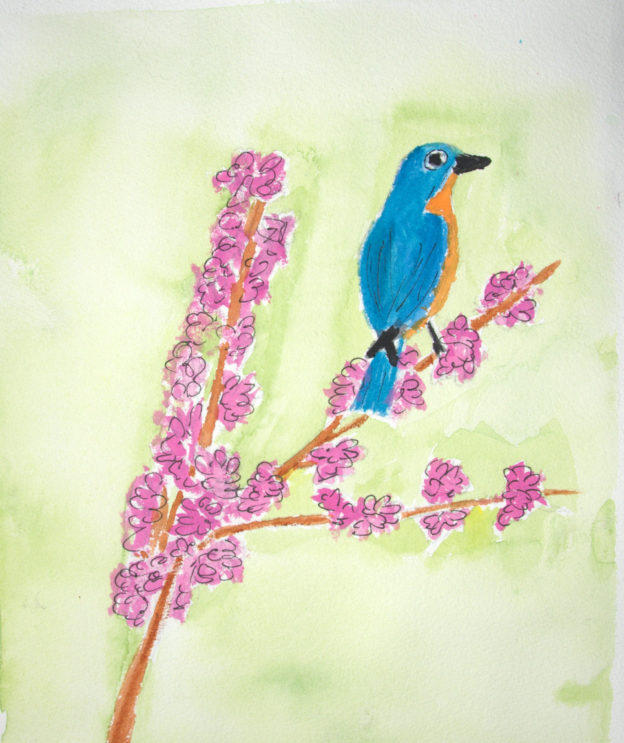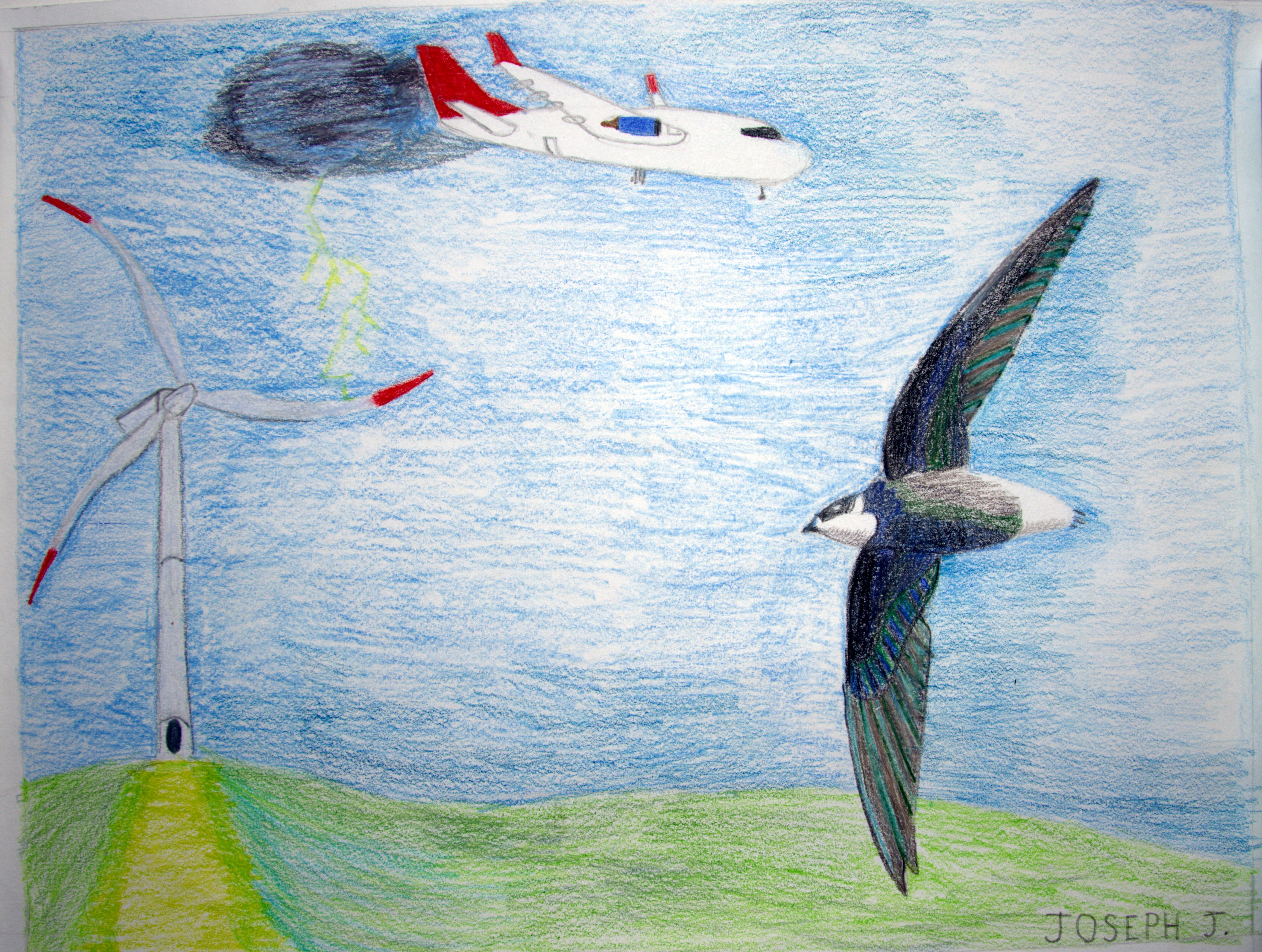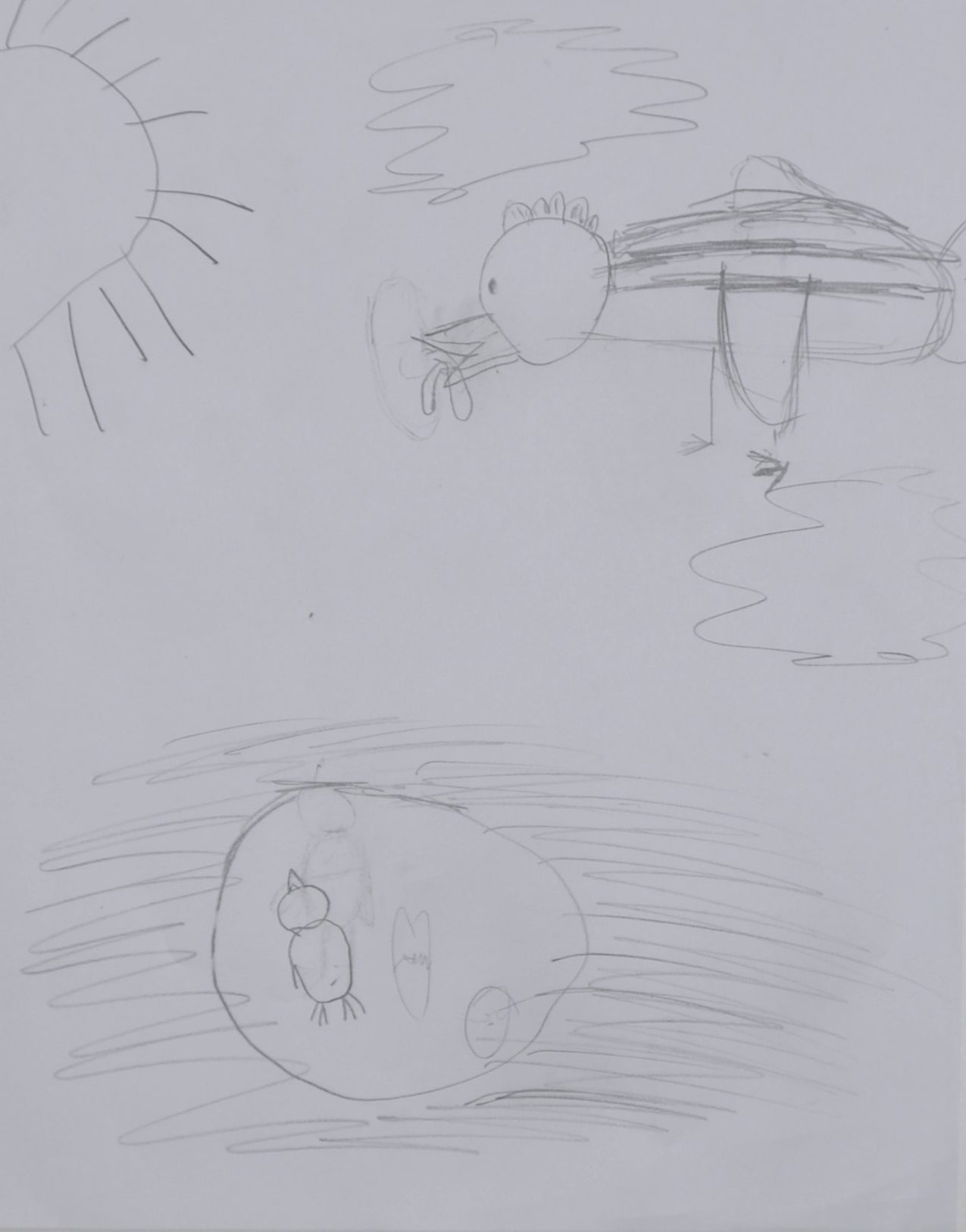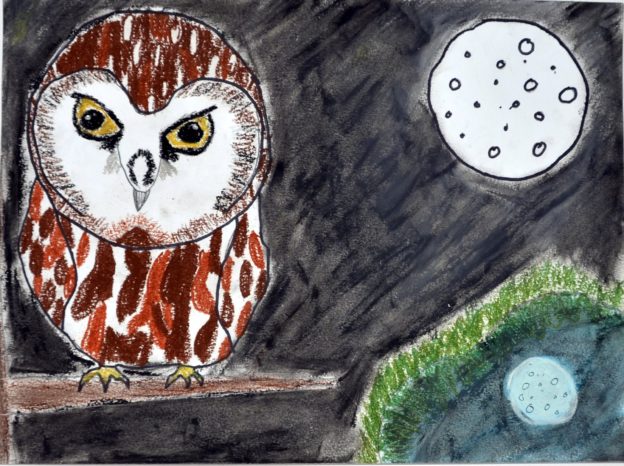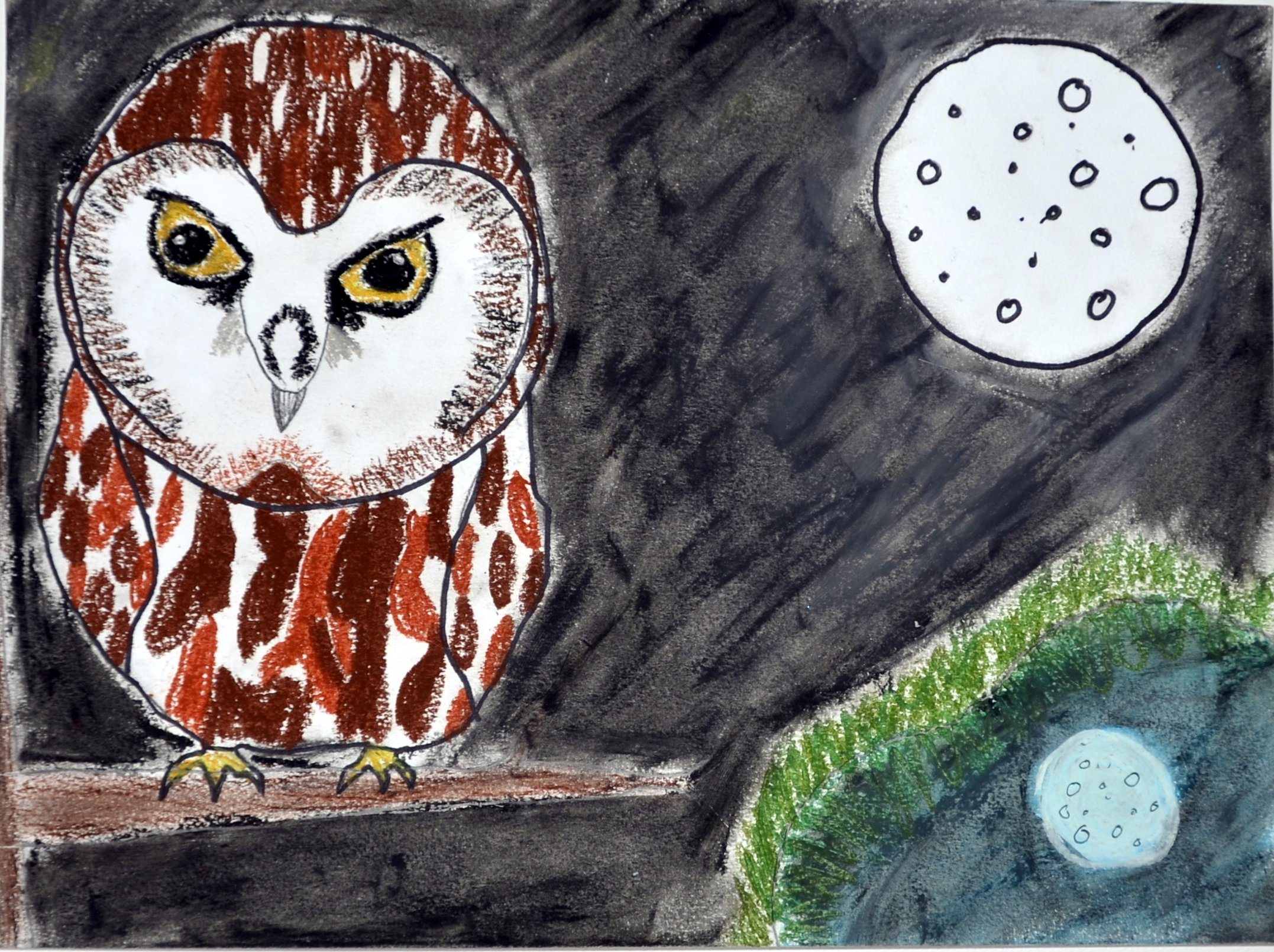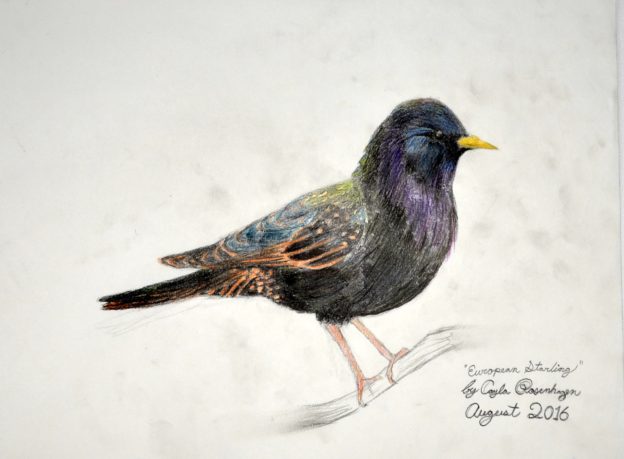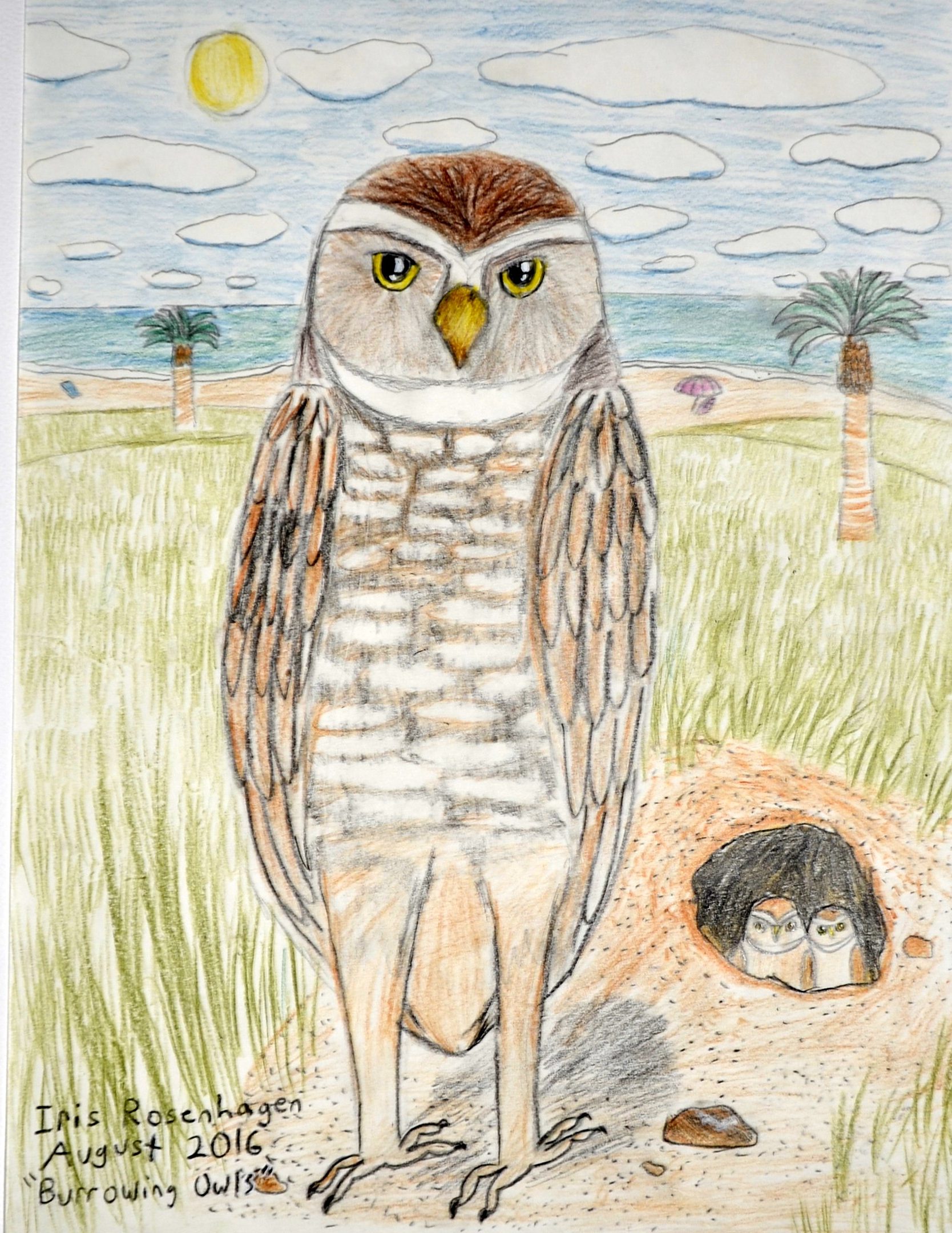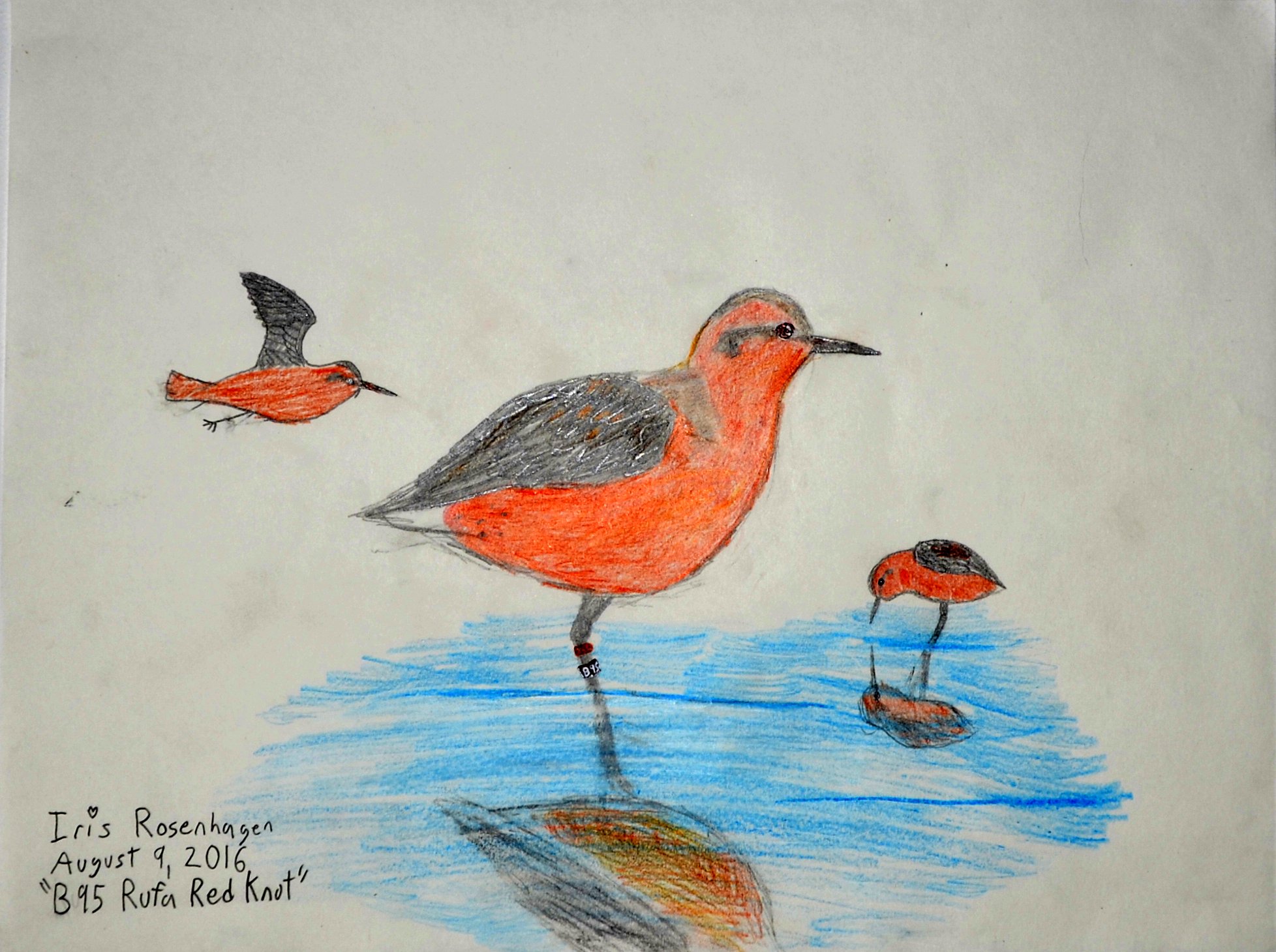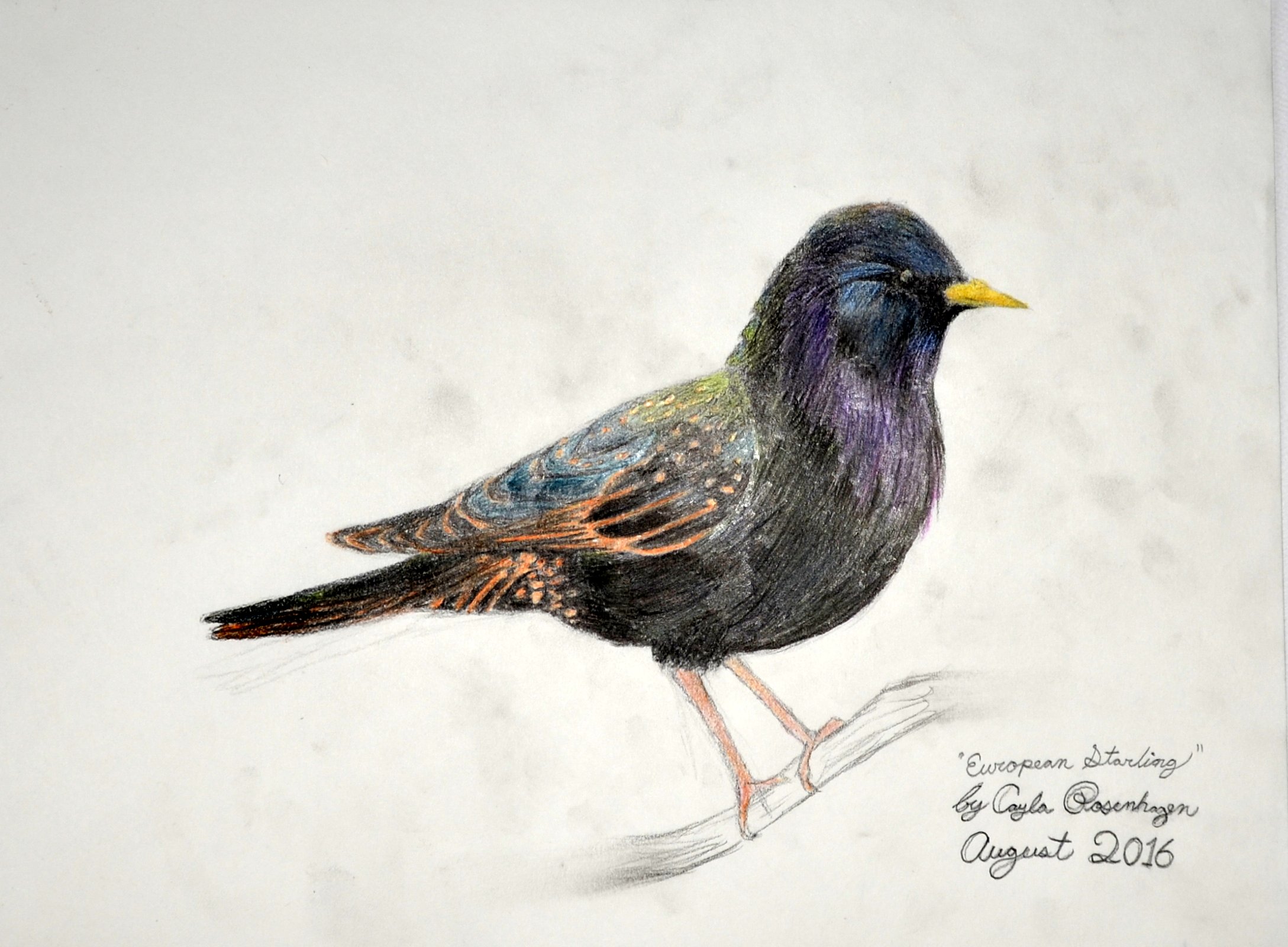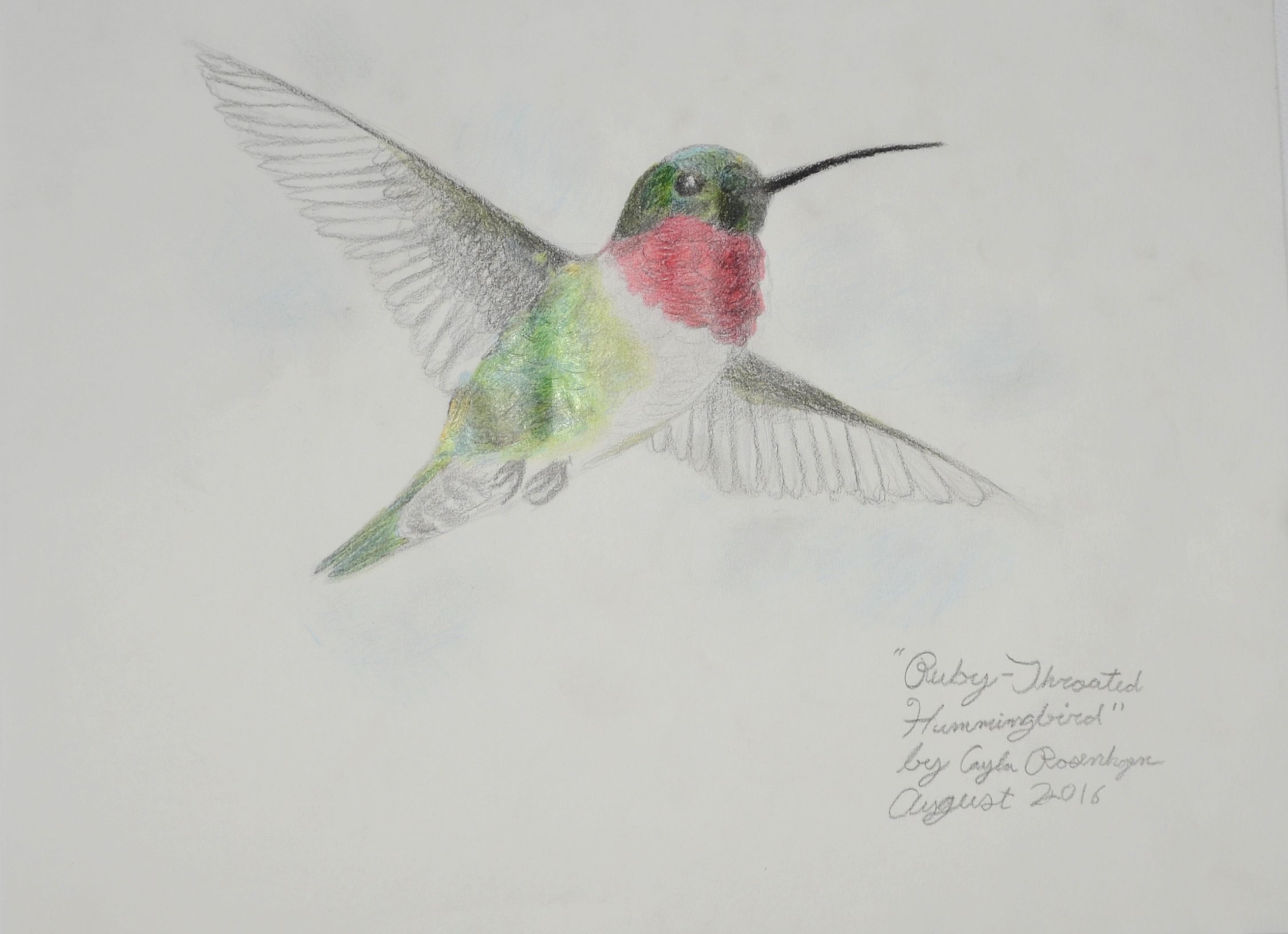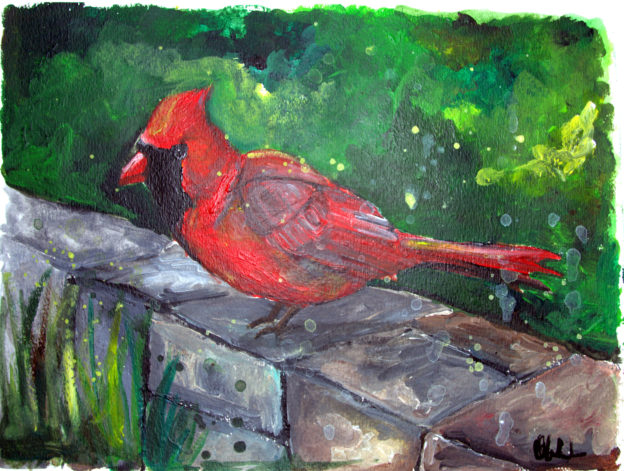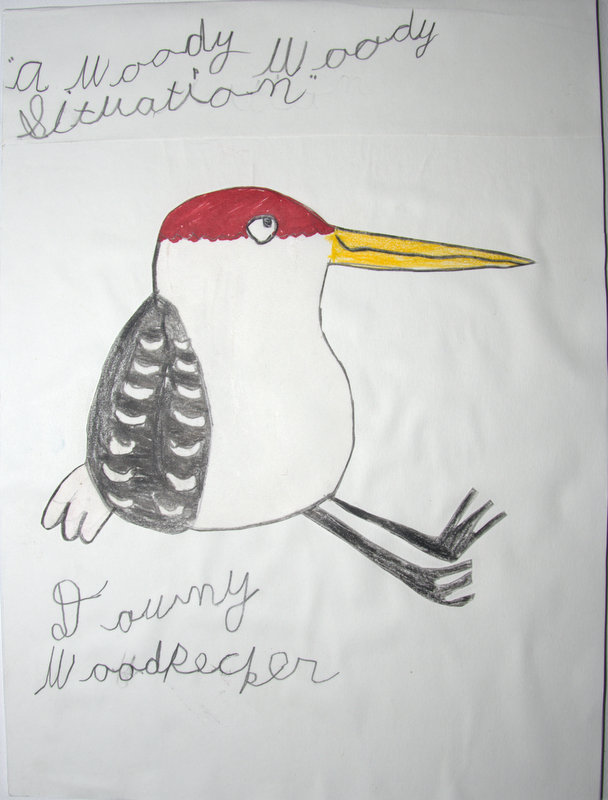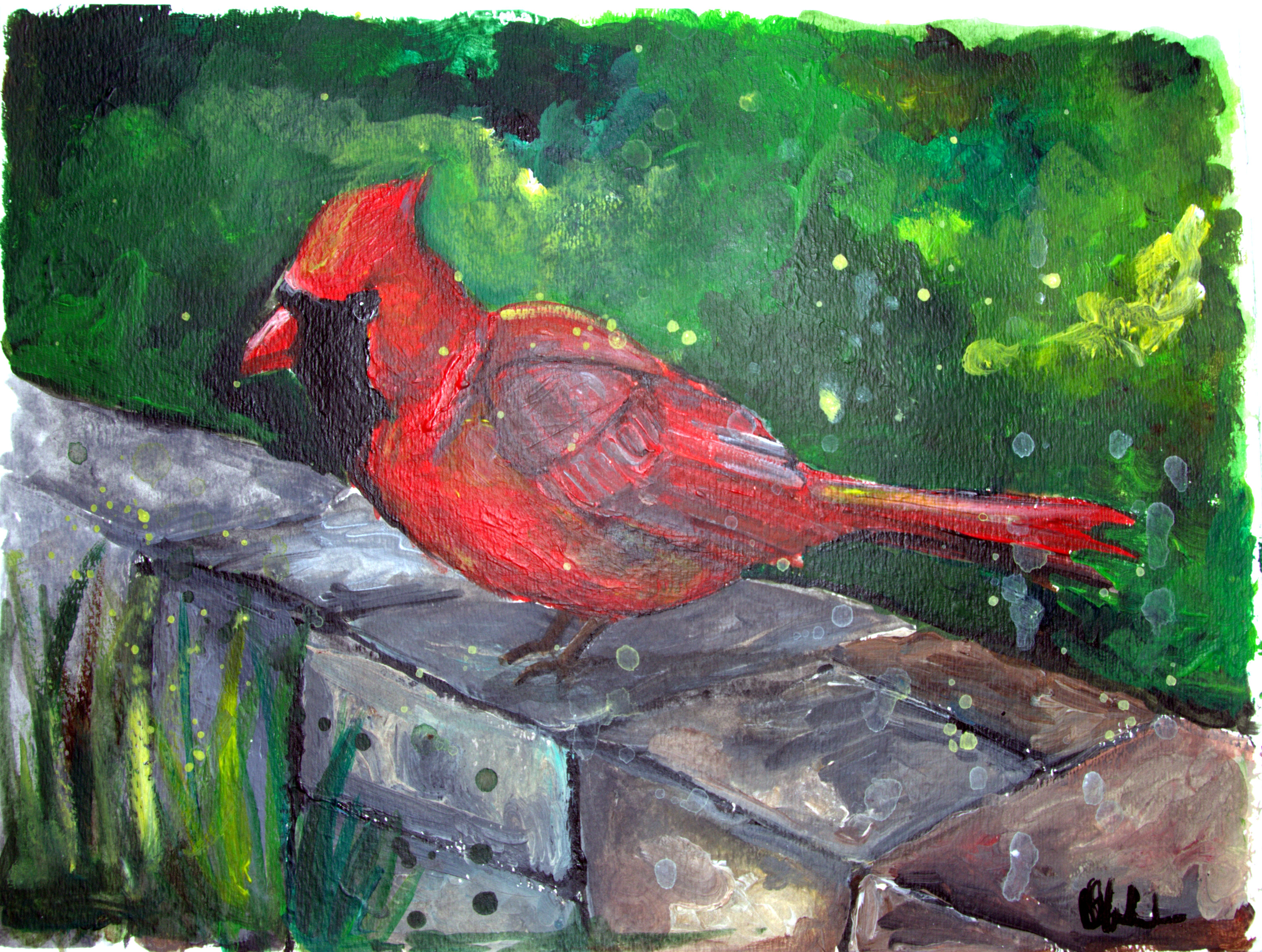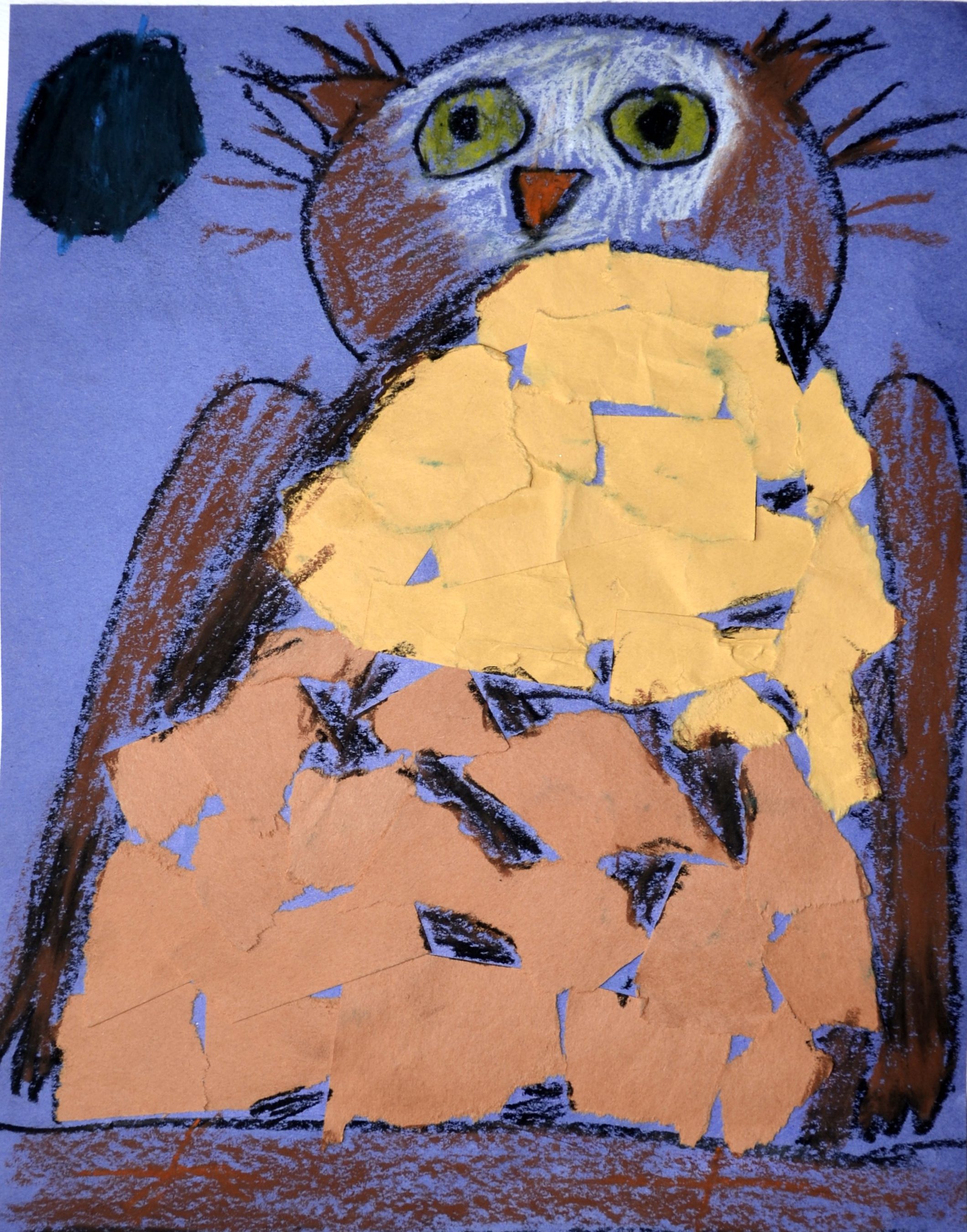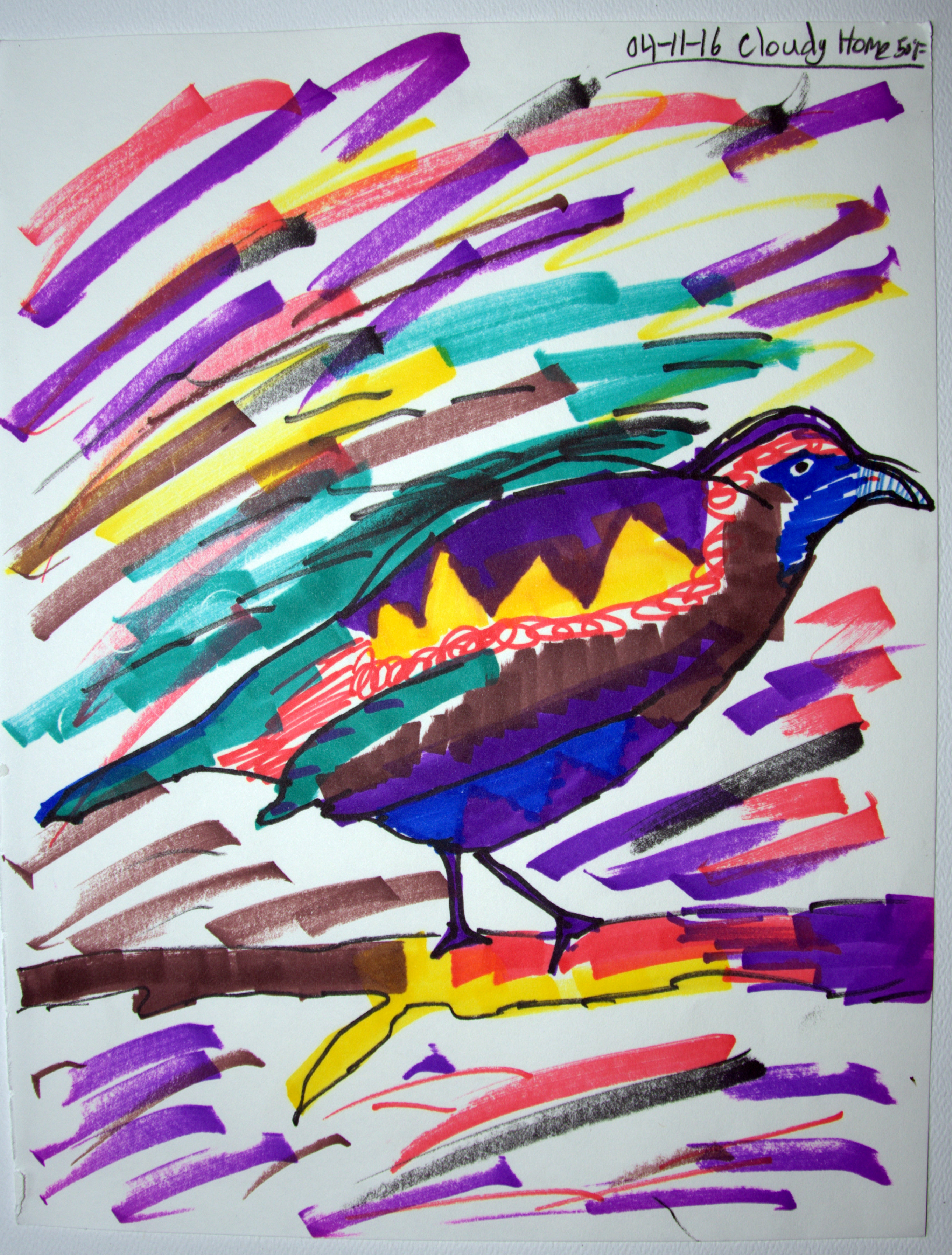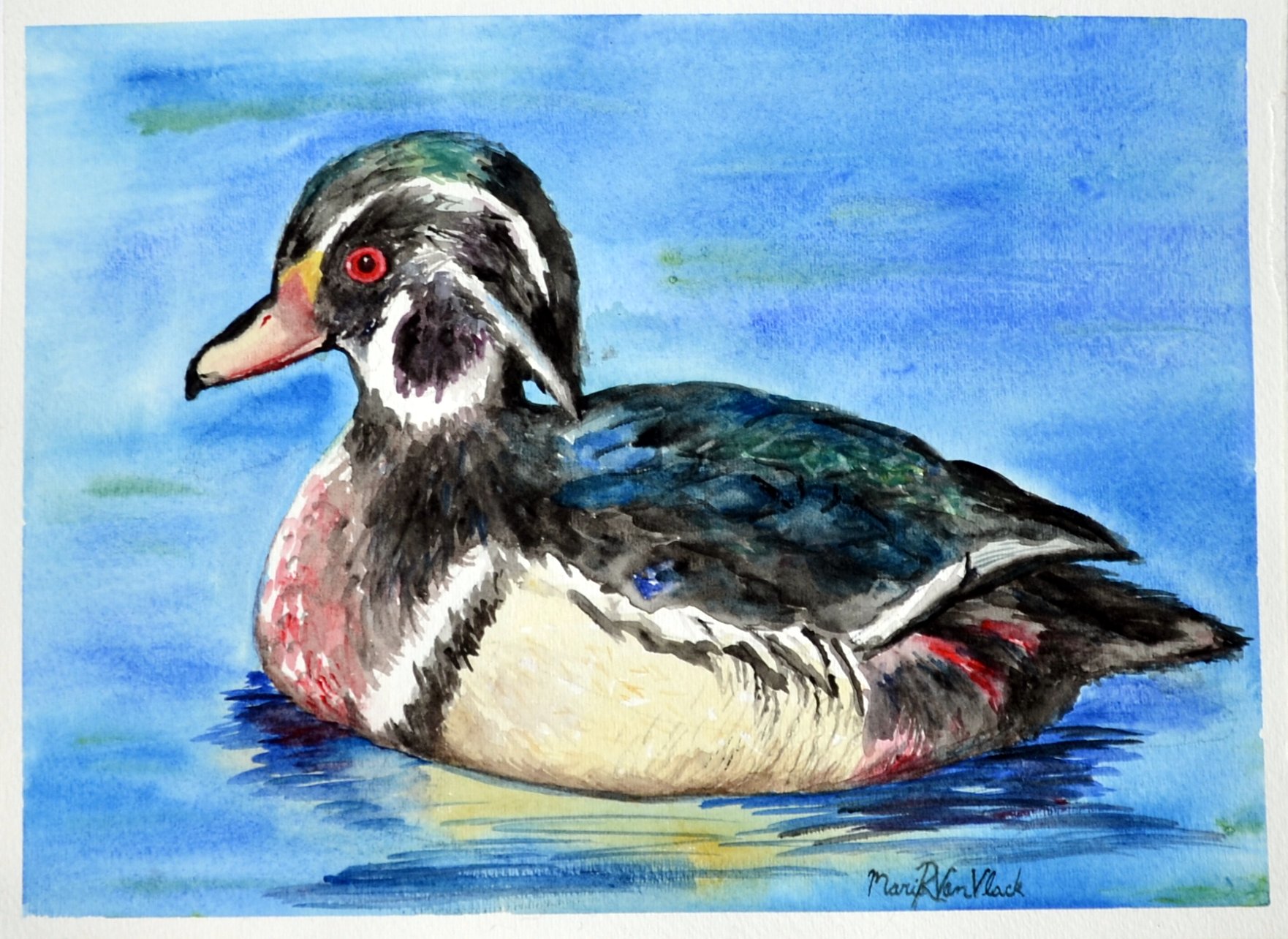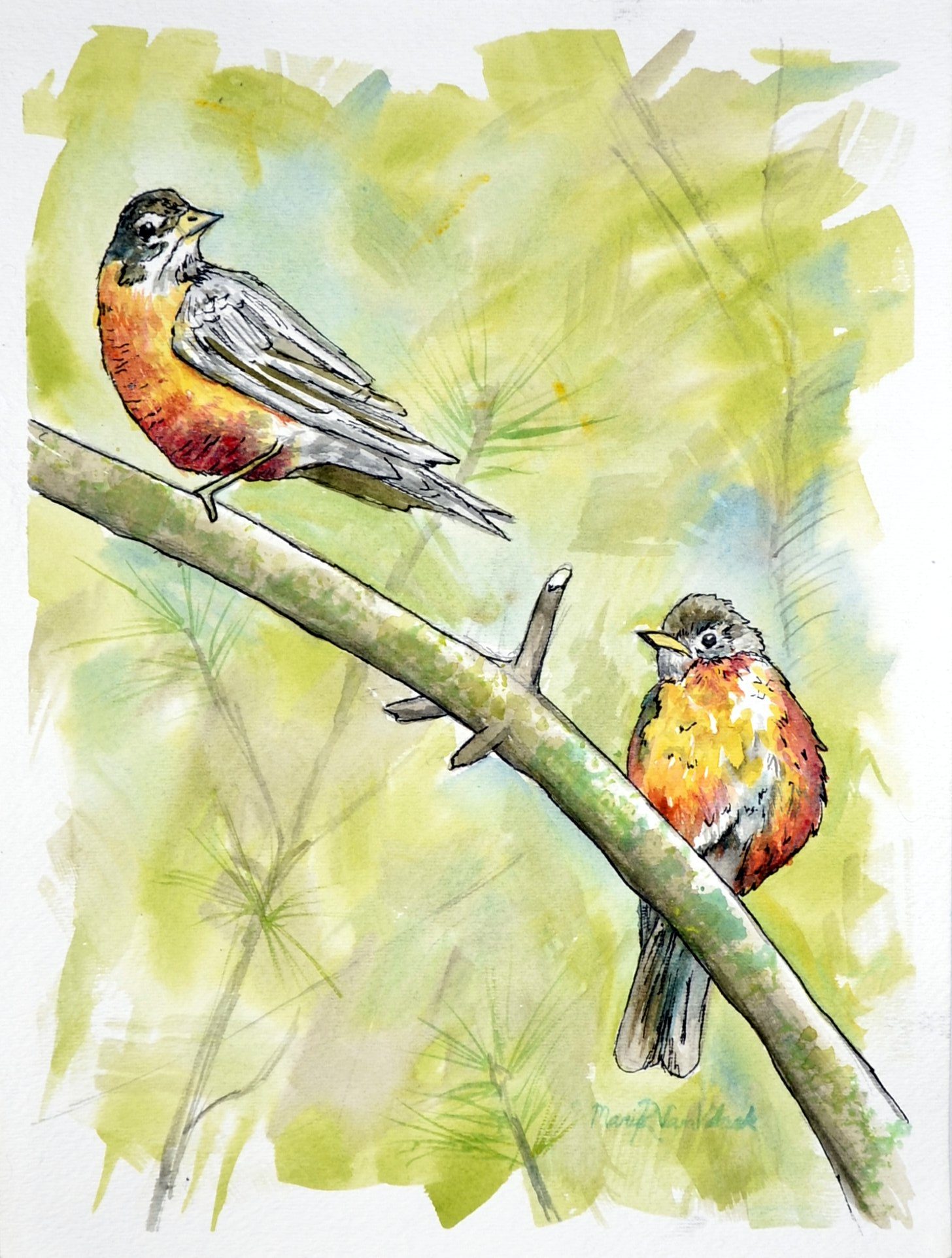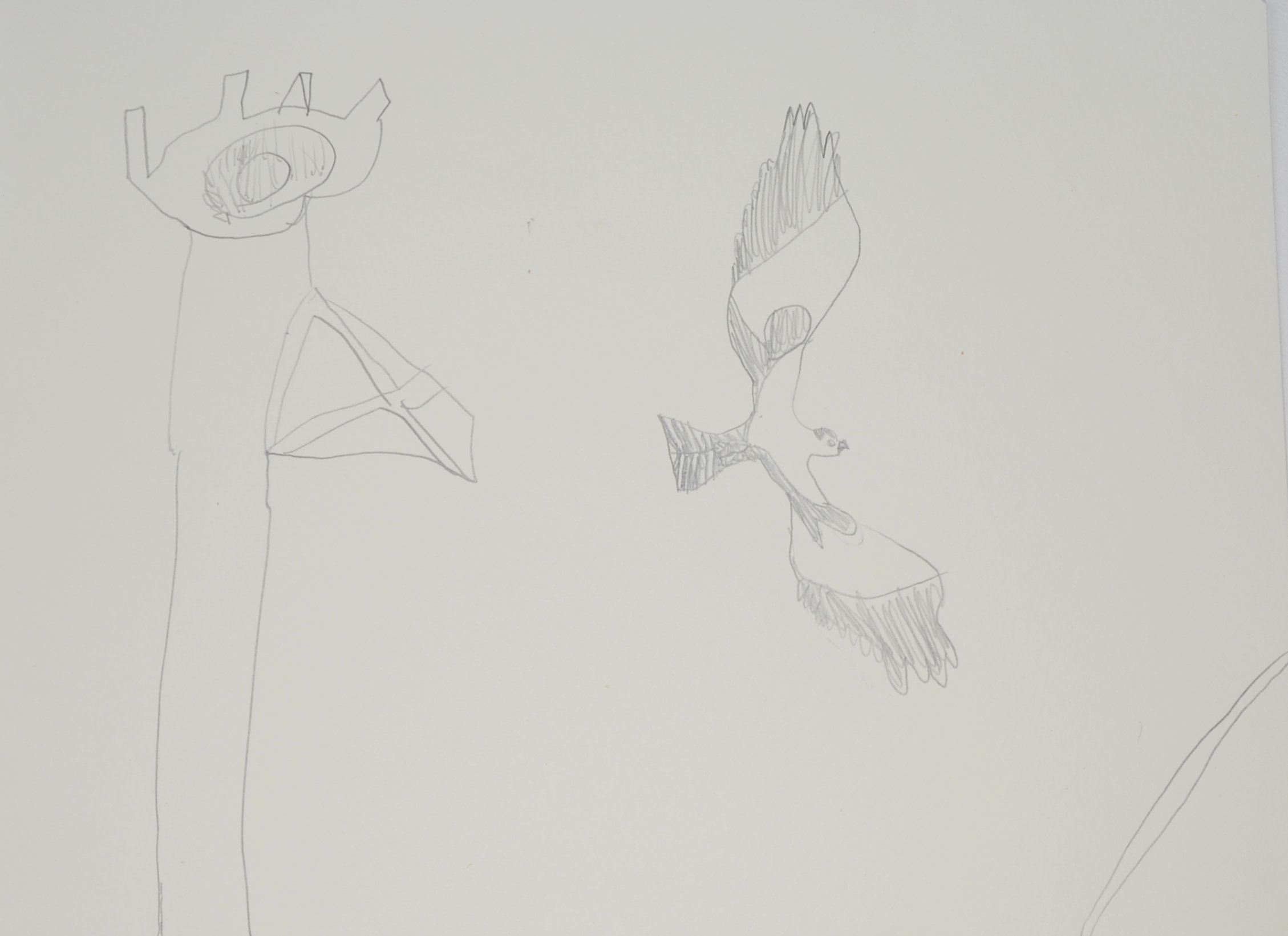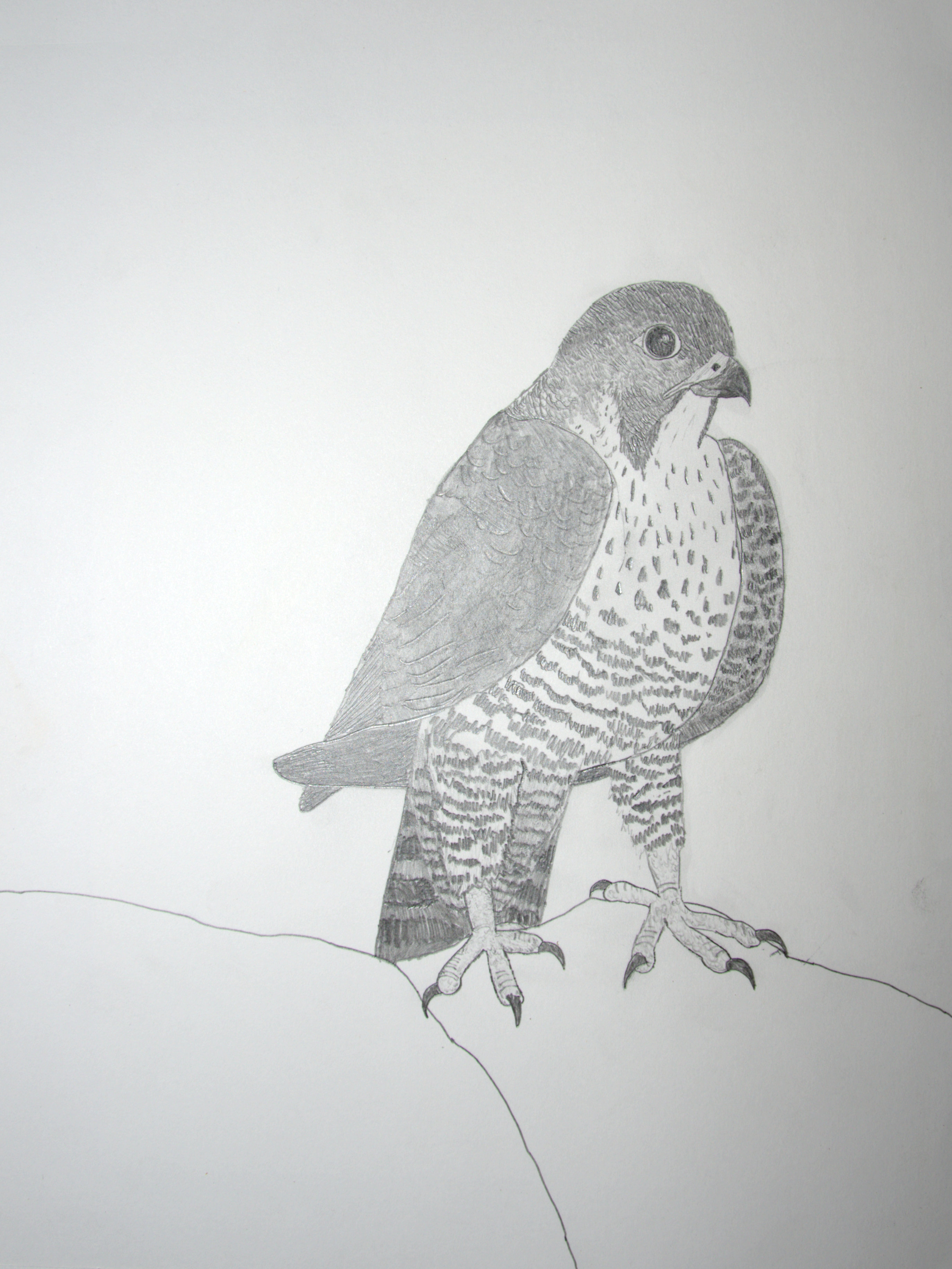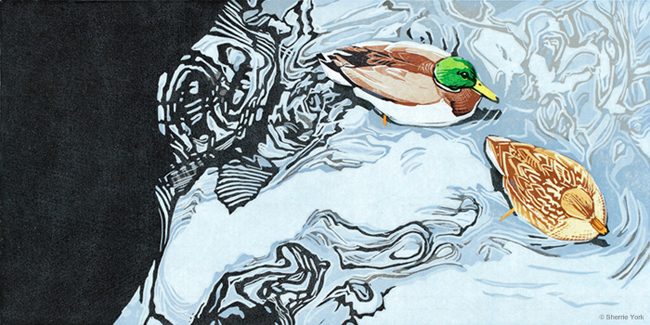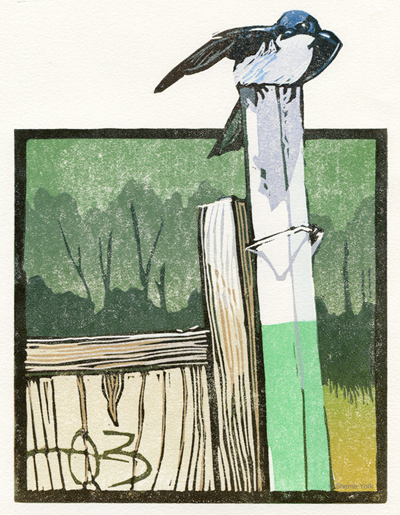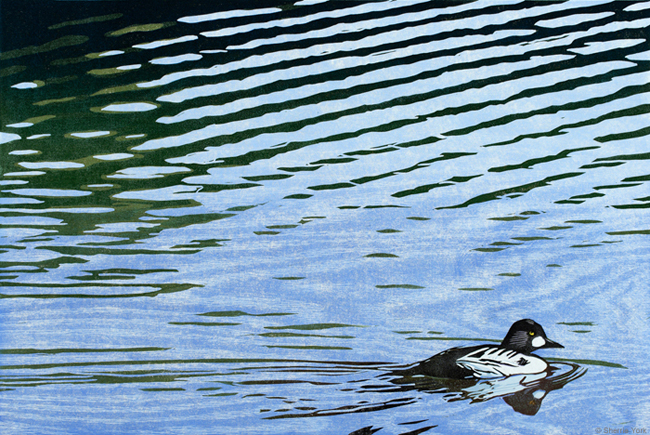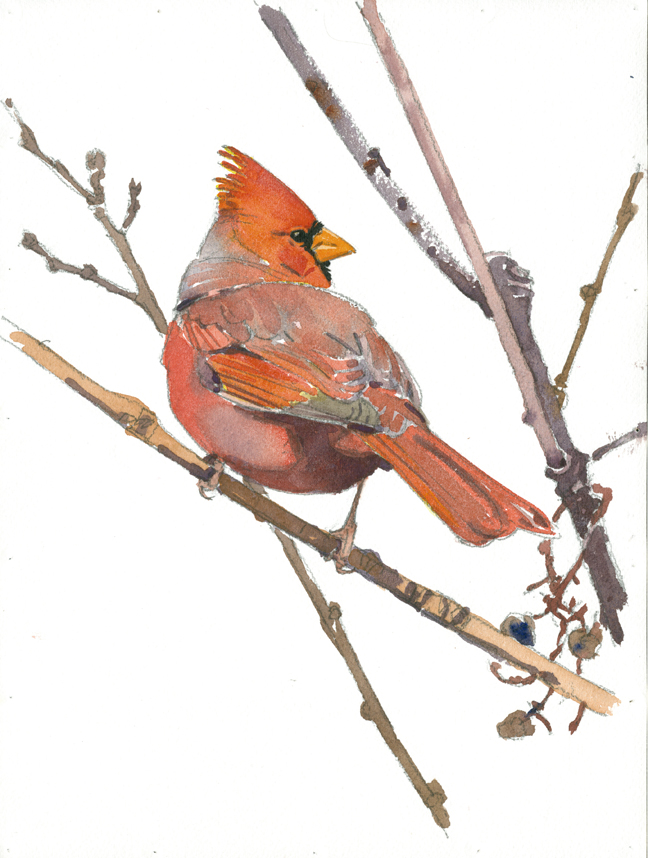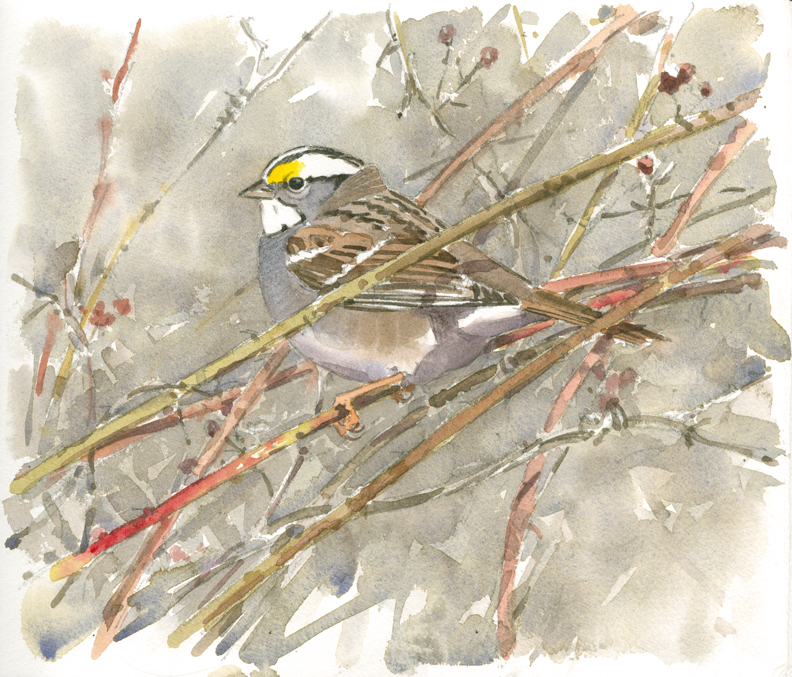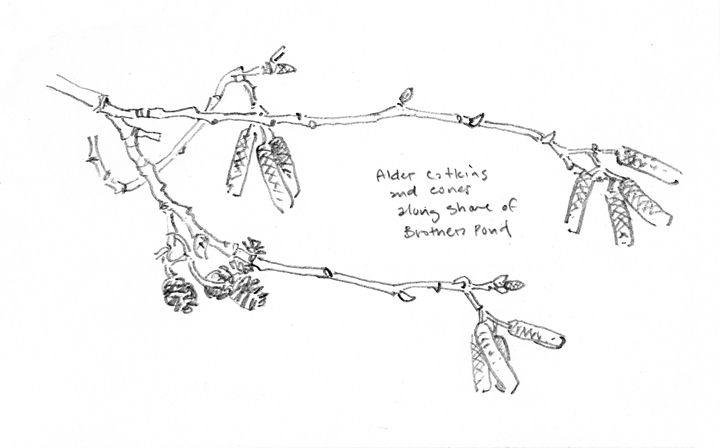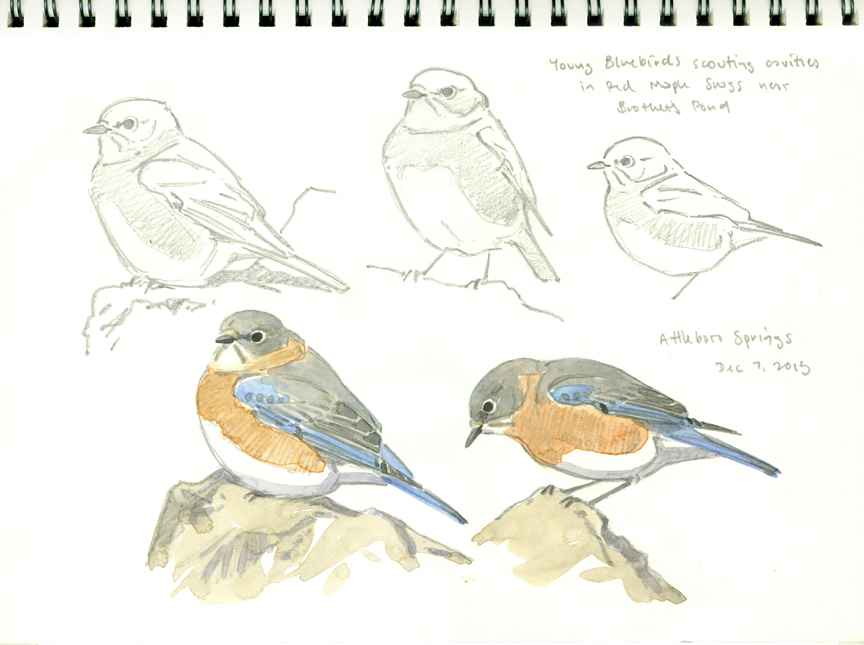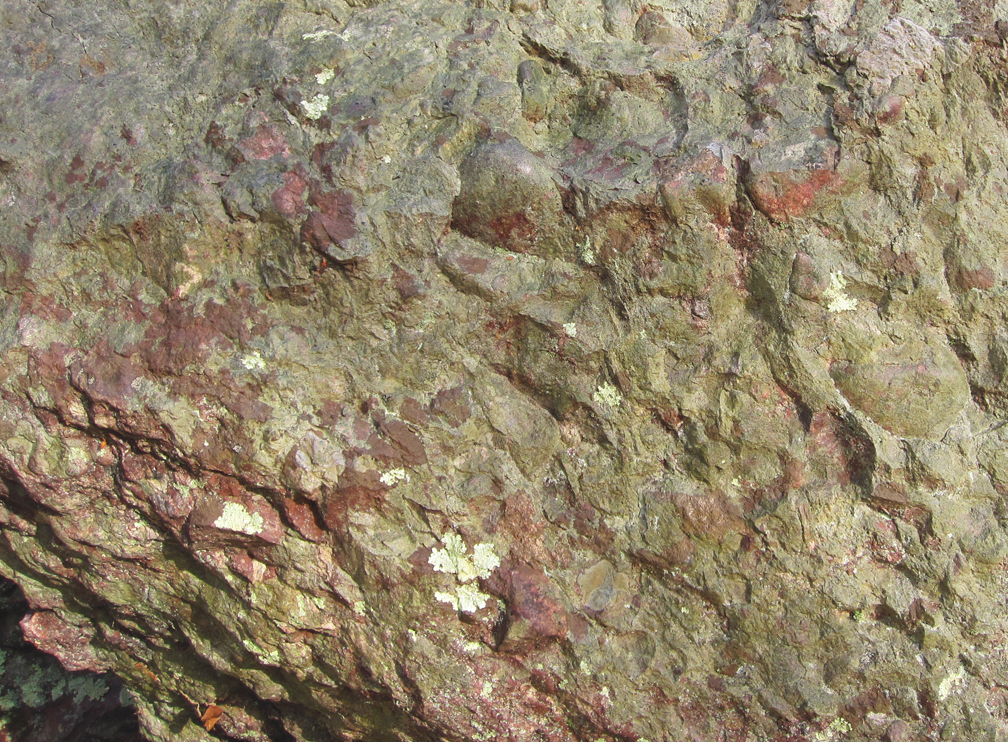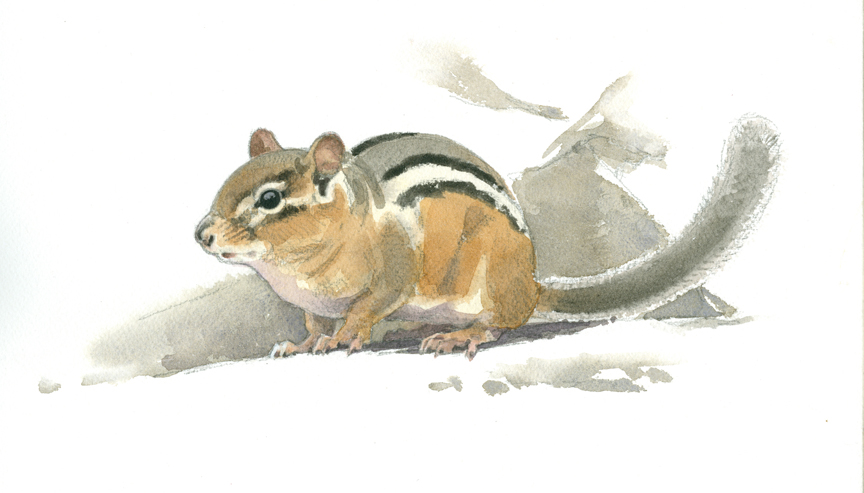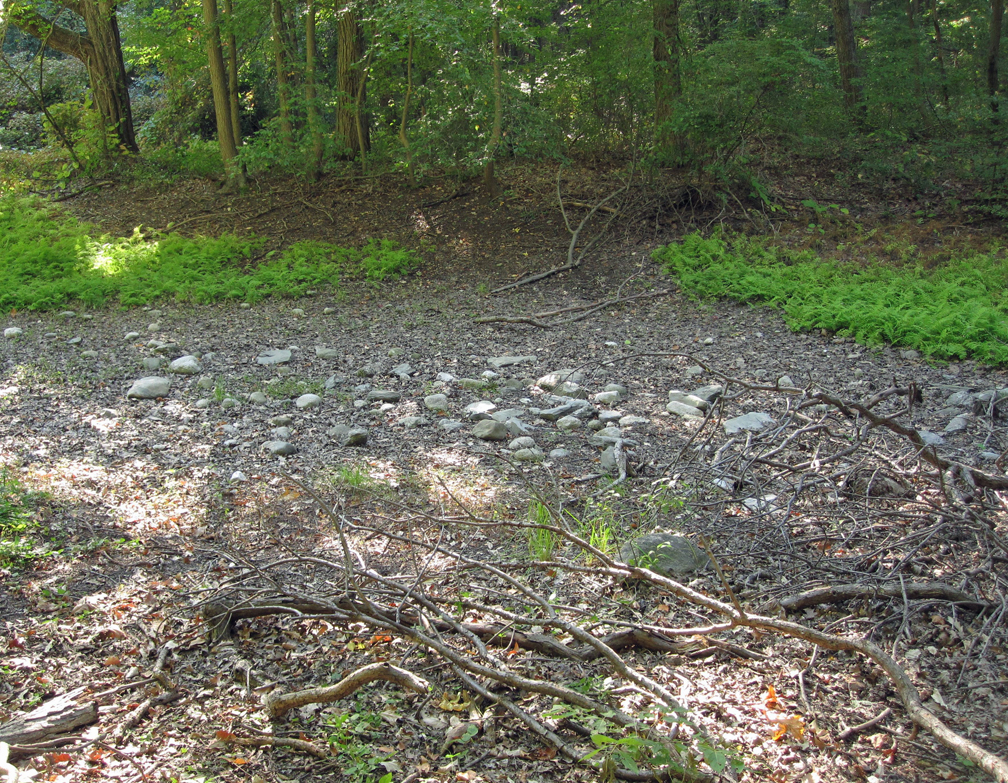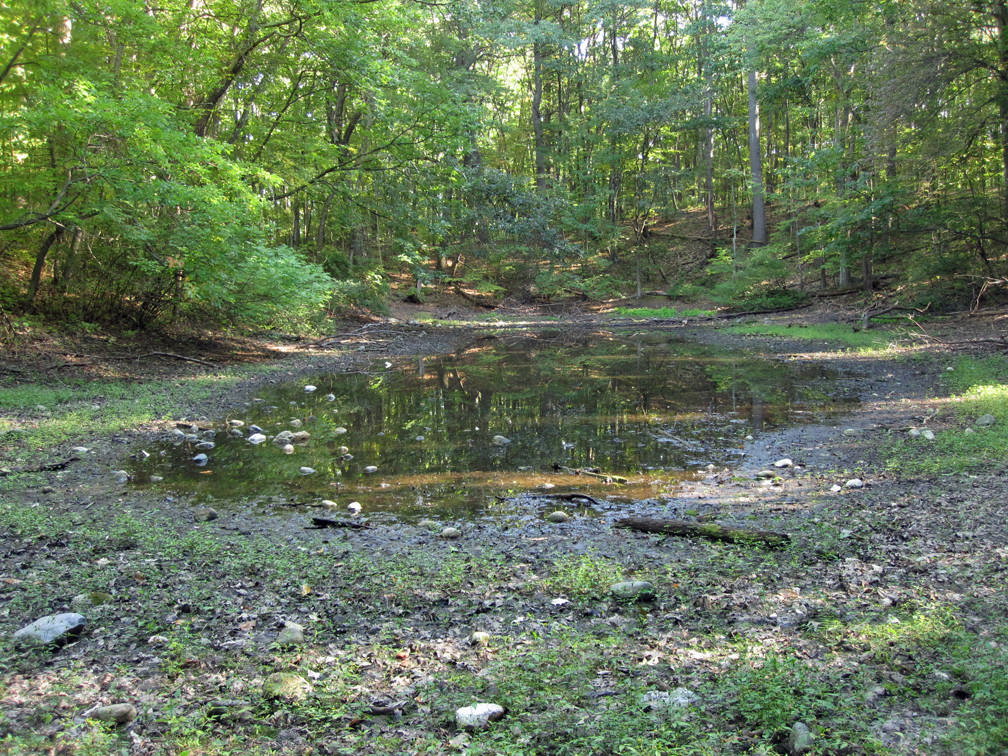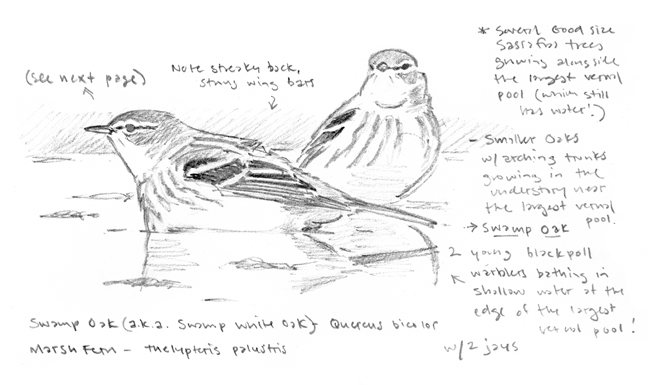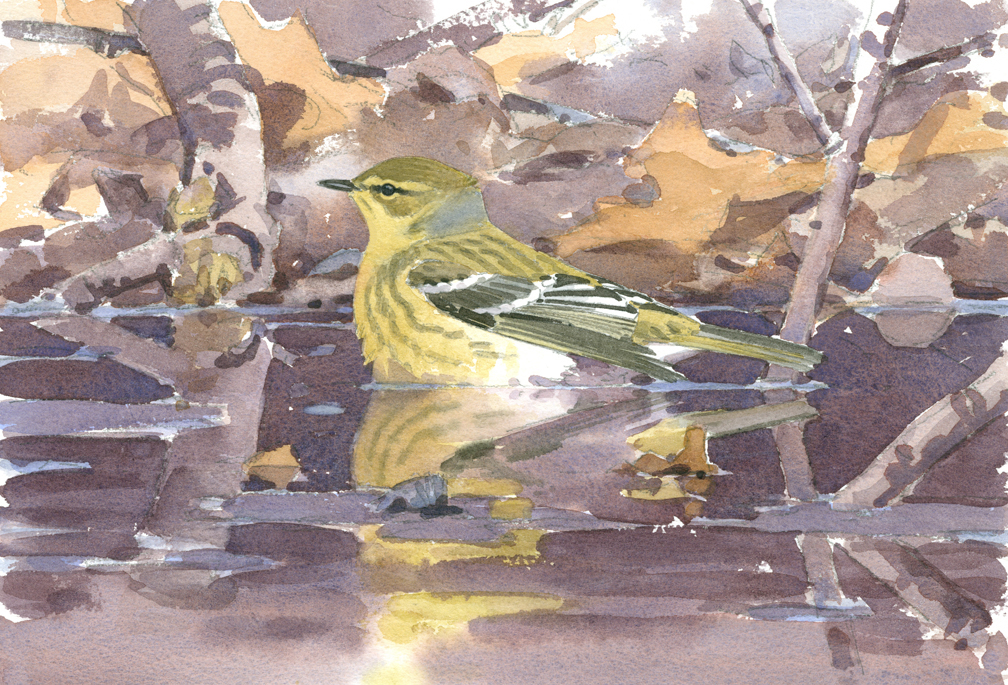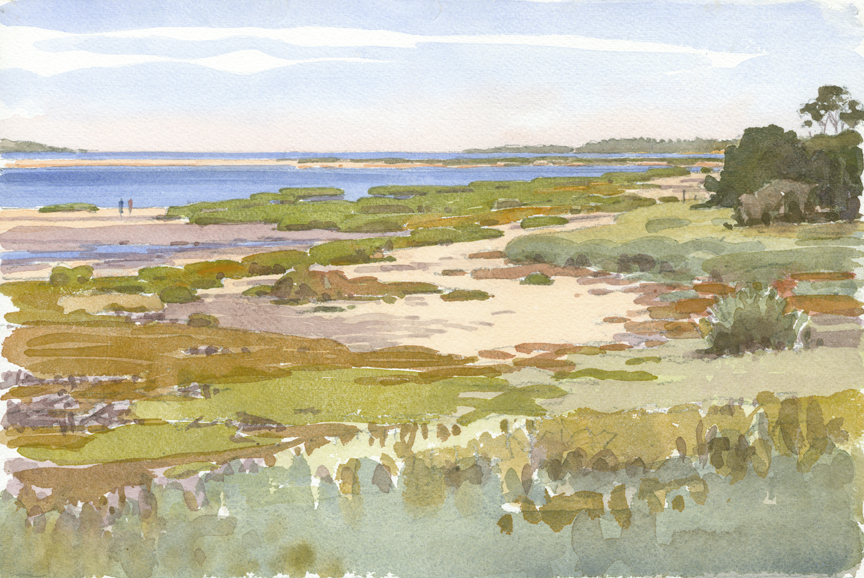We are extremely excited to display a selection of art from our first annual juried youth bird art exhibition. This annual exhibition is open to any children and young adults age 4 to 18 years old. All selected entries will be on display at the Museum of American Bird Art from September 23 to December 11th. Entries for our second annual exhibition will open in early 2017.
Sage Lemieux, Toucan, Age 11
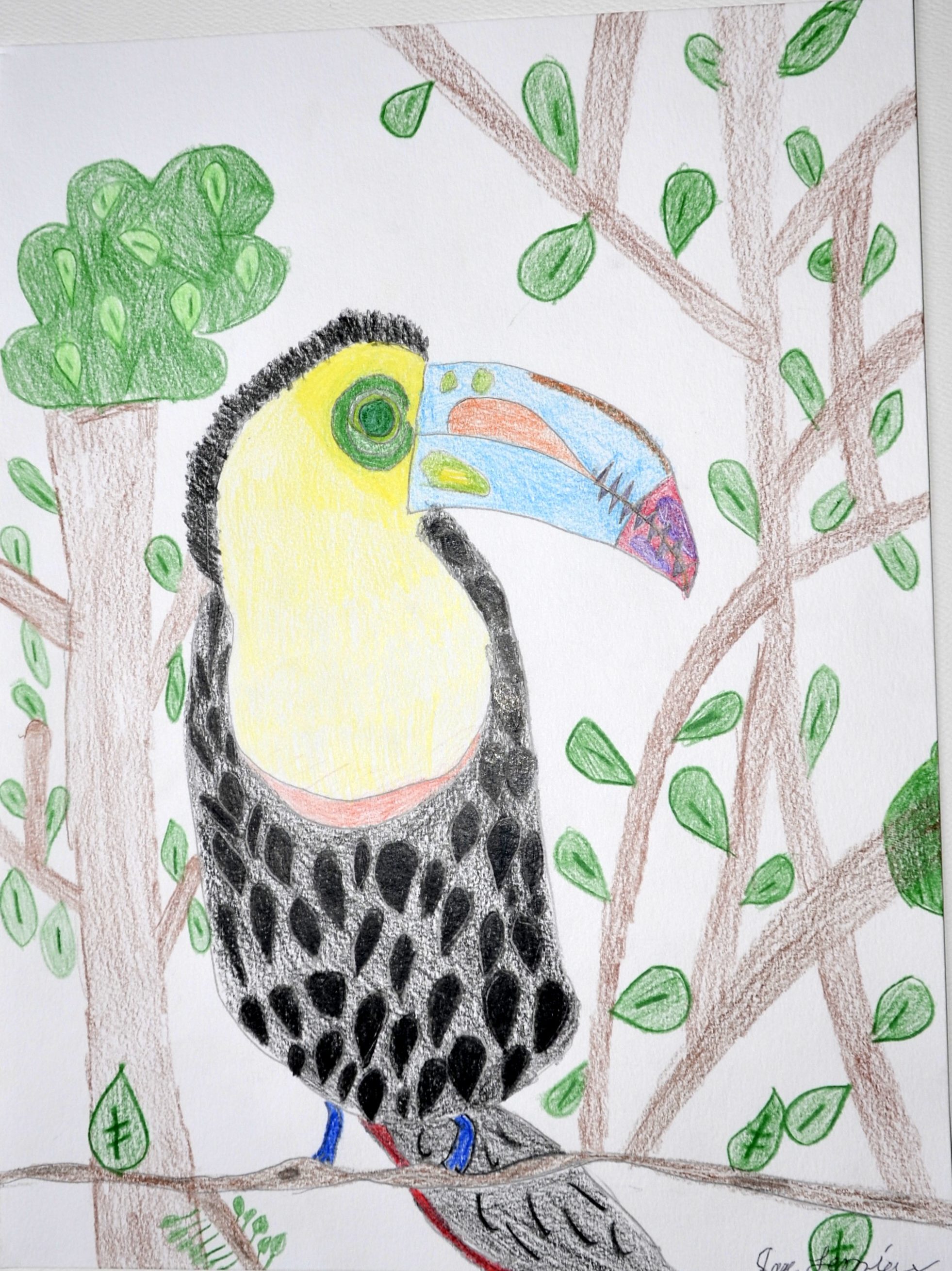
Sage Lemieux, Age 11
Bird Pooping, Neva Hobbs, Age 5

Eastern Bluebird, Jamie Davis, Age 13
“The Eastern Bluebird is one of my favorite birds of New England, because I have watched it and fed it and nurtured the nest boxes in our yard and at the Community Gardens in our town. This year Mama and I were invited to be nest box monitors at an old cranberry bog in our town. The Cape Cod Bird Club has 45 nest boxes there, occupied by Eastern Bluebirds, and we take our turn checking on them. I have loved seeing the various stages of growth in the Bluebirds, inspired by Julie Zickfoose’s new book, Baby Birds. I was thrilled a few winters ago to see Eastern Bluebirds in our yard and to watch the males and females at our feeders and bird bath. The males are my favorite color, a kind of Cerulean blue, with the females just slightly duller in color, but not in interest or intelligence. I chose a medium of watercolor for the bluebird because I loved the Cerulean Blue.”
Jamie Davis, Age 13
White-Throated Needletail, Joseph Jewett, Age 8
“The white-throated needletail is a rare and endangered species. It is a favorite of many birdwatchers because it is one of the fastest birds in the world. In 2013, a needletail got struck by the spinning blades of a wind turbine in the United Kingdom while anxious birdwatchers looked on. My drawing includes a needletail, an airplane, and a wind turbine. It symbolizes the negative impact that modern technologies can have on birds but also how birds have inspired new technologies that create community and help to protect the environment. When I grow up, I want to design turbines that can harvest huge amounts of energy from the wind while keeping birds, bats, and even bugs safe.”
Joseph Jewett, Age 8
Gabrielle Ross, Blue Jay Family, Age 7
“I love blue Jays. They are so pretty. I have a family of blue jays in my yard.
Their mom brings the babies food to eat.”Gabby Ross, Age 7


